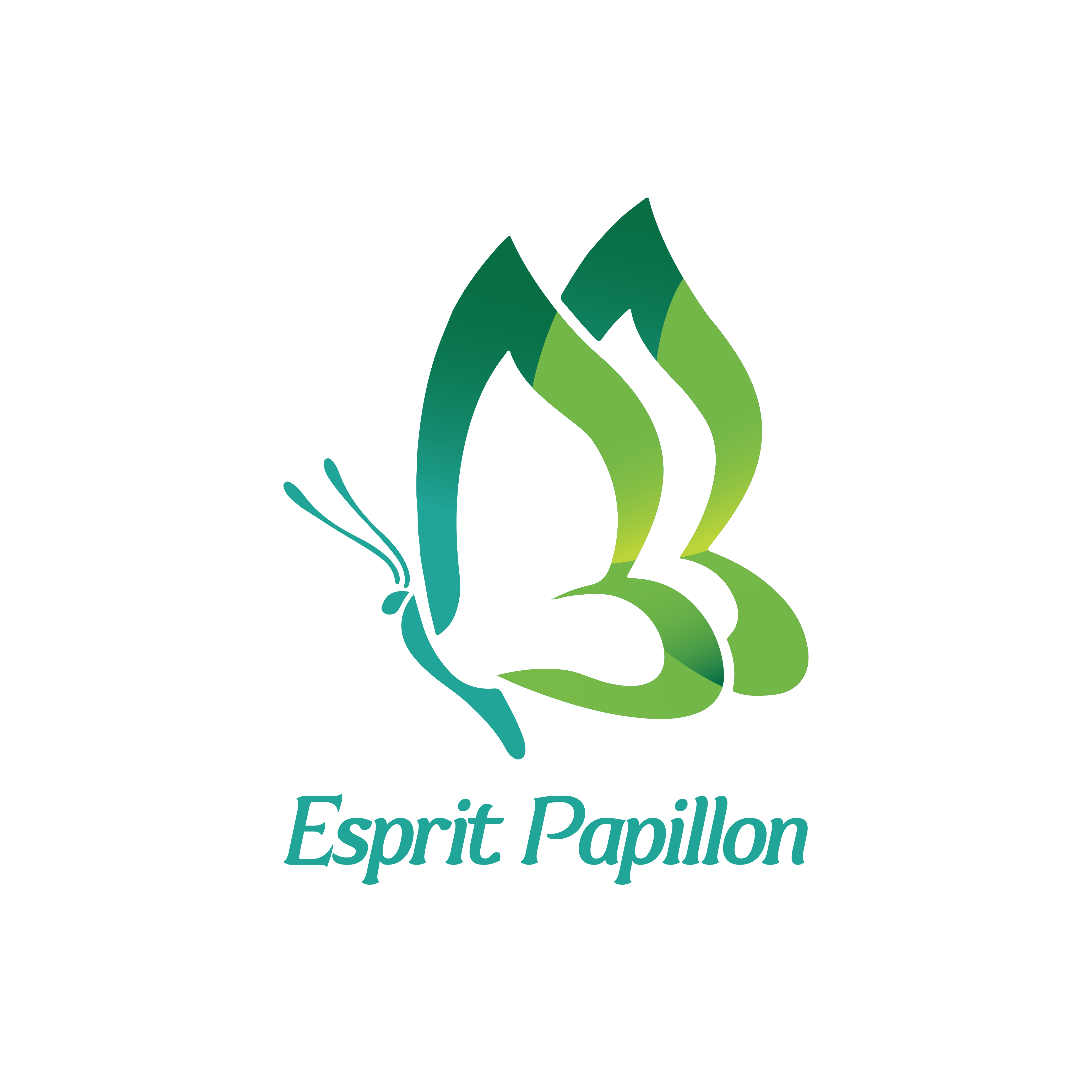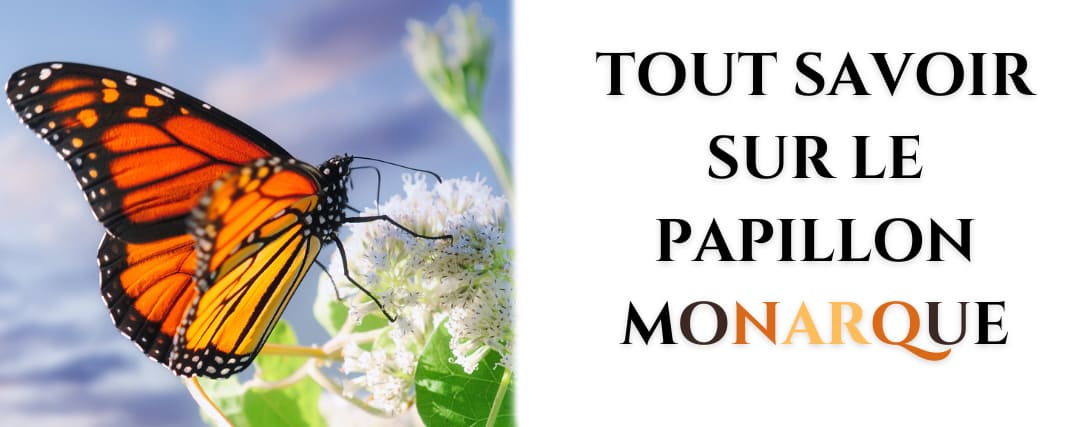There is a magical world around us, which often goes unnoticed, that of butterflies. Among these wondrous creatures, the monarch butterfly stands out with an extraordinary life story and captivating existence that goes beyond its vibrant colors. Through this article, you will discover the enchanting story of the monarch butterfly, a true wonder of nature.
In our busy lives, we rarely stop to marvel at the mysteries and wonders of nature. The monarch butterfly is a creature that deserves our fascination and understanding. Sporting distinctive orange and black wings, these magnificent creatures represent a remarkable transformation process, impressive migration and an important role in the ecosystem.
Monarch Butterfly Characteristics
Let's start with the basics: their physical characteristics, habitats and diet.
Physical Characteristics of the Monarch Butterfly
Monarch butterflies, scientifically known as Danaus plexippus , are arguably one of the most recognizable butterfly species due to their distinctive coloring. An adult monarch butterfly has a pair of large, bright orange wings, veined with black lines and bordered by a black band dotted with white spots. But their vibrant hues aren't just there for show. The bright colors serve as a warning to predators that they are toxic if ingested.

Monarchs also exhibit sexual dimorphism, meaning that males and females have distinct characteristics. Males are slightly larger and have a small black spot on each hindwing, which are special scales used in the release of pheromones during mating.
Habitat and geographic range
Monarch butterflies have a wide geographic distribution, spanning across North, Central, and South America. They are found from southern Canada to northern South America, including the Caribbean islands. They are also known to migrate to other parts of the world, including Australia, New Zealand and Western Europe.
Monarchs are extremely adaptable and can thrive in a variety of habitats. However, they particularly prefer open fields, meadows, and areas where their favorite food plant, milkweed, grows in abundance.
Diet and predators
Monarchs are quite particular when it comes to their diet. The caterpillars feed exclusively on milkweed plants (genus Asclepias). This diet is essential to their survival strategy, as milkweed's toxins make them unpalatable to predators, providing them with a powerful natural defense.

Adult monarch butterflies, on the other hand, drink nectar from a variety of flowering plants. Their long, straw-shaped trunk allows them to draw nectar from deep within the flowers. This diet of nectar provides them with the energy they need to fly, mate and migrate.
Despite their toxicity, monarch butterflies are not entirely predator-free. Birds such as orioles and grosbeaks, as well as insects, spiders, and some mammals, have been known to prey on monarchs. However, many learn to avoid butterflies after their first unpleasant meal.
The fascinating life cycle of the monarch butterfly
From an unassuming egg to a vibrant flying spectacle, each stage of the monarch's life is an intriguing story of survival, adaptation and metamorphosis.
The four stages of life
Monarch butterflies undergo complete metamorphosis, a biological process involving four distinct stages: egg, larva (caterpillar), pupa (chrysalis), and adult (imago).
Egg
The life of a monarch butterfly begins with a tiny cream-colored egg, usually laid by the female on the underside of a milkweed leaf. It is the monarch's favorite food plant, providing food for the next stage of the life cycle.
Larva (caterpillar)
After a few days, the egg hatches into a larva or caterpillar. At this point, the caterpillar feeds voraciously on milkweed, accumulating necessary nutrients and storing energy for the processing stage that follows.

Nymph (chrysalis)
When the caterpillar is fully developed, it forms a protective covering around itself, known as a chrysalis or pupa. In this jewel-like green and gold setting, the caterpillar undergoes an incredible transformation, a process scientifically called “metamorphosis”.
Adult (imago)
After about two weeks, the chrysalis opens to reveal a fully formed monarch butterfly. The adult butterfly will mate and lay eggs, continuing the cycle of life.
The miraculous process of metamorphosis
Metamorphosis is an astonishing process that has captivated scientists and nature lovers. The transformation from a crawling caterpillar to a flying butterfly in the chrysalis involves the breakdown and reformation of cells into entirely new structures. A process which remains one of the most remarkable phenomena of nature.
Lifespan and reproduction
The lifespan of a monarch butterfly varies depending on the time of year it emerges as an adult. Monarchs that hatch in early summer have the shortest lives, usually 2 to 6 weeks. However, the generation that emerges at the end of summer is different: these monarchs, often called the "Methuselah generation", delay their reproduction and can live up to 8 months. These are the butterflies that undertake the epic migratory journey, which we will see without further delay.
The Great Monarch Migration
Perhaps one of the most amazing phenomena in the natural world is the great migration of the monarch butterfly. This epic journey of thousands of kilometers, undertaken by tiny creatures with delicate wings, is a spectacle that amazes scientists and nature lovers alike.
The purpose of this migration for monarchs is to escape the cold winter temperatures that they cannot survive.
A journey of several thousand kilometers
Every fall, millions of monarch butterflies make an incredible journey from North America to the oyamel fir forests of the mountains of central Mexico, where they spend the winter. This journey can cover a staggering distance of up to 5,000 km. In the spring, these monarchs begin the journey north, laying eggs along the way to ensure the next generation continues the journey.
However, it is essential to note that not all monarch populations migrate. Those found west of the Rocky Mountains generally migrate to coastal California, while populations in Australia, New Zealand, and other parts of the world may not migrate at all.
The mystery of navigation
One of the great mysteries of monarch butterfly migration is how these butterflies, which have never made the journey before, find their way to the exact locations their ancestors occupied the previous year. Scientists believe they use a combination of environmental cues, such as the position of the sun and Earth's magnetic field, as well as inherited genetic information to find their way.
The cycle of generations
What's even more fascinating is the multi-generational nature of the monarch's migration. The butterflies that return to North America in the spring are not the same as those that left the previous fall. Instead, it takes several generations of monarchs to complete the return journey. This “relay race” style migration is unique among butterflies and contributes to the monarch’s fascinating tale.
The Great Monarch's migration is a testament to the remarkable endurance and navigational prowess of these creatures. It is a phenomenon steeped in mystery, wonder and awe, symbolizing the incredible feats that nature can accomplish. Yet the monarchs' incredible journey is under threat, highlighting the urgent need for conservation efforts.
Role of the monarch butterfly in the ecosystem
Monarch butterflies aren't just amazing creatures to see. They play a vital role in our ecosystem, serving as pollinators, participants in the food chain, and indicators of environmental health.
Monarch Butterflies as Pollinators
Although monarch butterflies are not the most efficient pollinators compared to bees or some other butterflies, they still contribute to pollination. As they flit from flower to flower sipping nectar, they inadvertently carry pollen on their bodies, transferring it from the male parts of the flower to the female parts, thus facilitating the plants' reproduction. Their role in pollination promotes biodiversity and helps many plants, including several human food sources, reproduce.

Part of the food chain
Monarch butterflies form a vital link in the food chain. Their caterpillars are preyed upon by a variety of insects and birds. As adults, their toxic nature deters most predators, but some species have evolved to tolerate toxins, providing unique insight into the intricacies of evolution and natural selection.
Ecosystem health indicators
Monarch butterflies are considered a flagship species for conservation. Their presence, abundance or rarity can indicate the health of an ecosystem. Due to their reliance on milkweed and certain overwintering sites, changes in monarch populations may reflect changes in habitat conditions, the impacts of climate change, and the effects of pesticide use .
The role of monarch butterflies in the ecosystem highlights their importance far beyond their aesthetic appeal. Understanding their role in the balance of nature is crucial, especially when we examine the challenges they face and the conservation efforts needed to preserve them, which we will explore in the following sections.
Threats to Monarch Butterflies
Despite their resilience and adaptability, monarch butterflies face several threats that have led to a significant decline in their populations in recent years. Understanding these threats is the first step toward implementing effective conservation strategies.
Loss of habitat
One of the biggest threats to monarch butterflies is habitat loss. Urban development, agriculture and logging have led to the destruction of milkweed plants and forests in Mexico and California where monarchs overwinter. Without these crucial resources, monarchs struggle to reproduce and survive the winter months.
Climate change and its impact
Climate change poses another serious threat to monarch butterflies. Changes in temperature and precipitation can affect milkweed growth and availability of nectar from the flowers. Additionally, severe weather events can directly harm or kill monarchs or disrupt their migratory patterns.
Diseases and parasites
Widespread use of herbicides in agriculture is a threat because it destroys milkweed, the monarch caterpillar's only food source. Pesticides can also directly harm or kill monarchs. Additionally, monarchs are susceptible to several parasites and diseases that can affect their development and survival rate.
The threats facing monarch butterflies are significant and have led to population declines in many regions. However, the story does not end there. Many people, communities, and organizations are stepping up to protect and conserve these remarkable creatures, a topic we'll explore in more depth in the next section.
Monarch butterfly conservation efforts
Faced with the harsh reality of declining monarch populations, numerous conservation efforts have emerged at the local, national and international levels. These initiatives aim to protect, preserve and strengthen the monarch's habitats and migratory routes.
Importance of conservation
Habitat restoration is the cornerstone of most monarch conservation strategies. This involves planting milkweed and nectar-rich flowers in home gardens, parks, schoolyards and other green spaces. Additionally, conservation organizations work tirelessly to protect monarch wintering sites in Mexico and California from logging and degradation.
Global initiatives
Regulating the use of pesticides and herbicides that harm monarchs and their food sources is another vital conservation strategy. Many organizations advocate for the adoption of more sustainable agricultural practices that minimize harm to wildlife.
How can individuals contribute?
Raising public awareness of the plight of monarchs and involving citizens in conservation efforts is essential to the butterflies' survival. Many programs engage volunteers in activities such as tagging monarchs to help track their migration and monitor butterfly populations. These citizen science initiatives provide valuable data for research while fostering a sense of environmental stewardship.

International cooperation
Given the monarch's extensive migratory routes crossing international borders, conservation efforts require international cooperation. Governments, NGOs and researchers from the United States, Mexico and Canada are working together to protect monarchs and their migration, a natural phenomenon of hemispheric importance.
Despite the challenges, the determination to protect the monarch butterfly is stronger than ever. By understanding their plight and contributing to conservation efforts, we can each play a role in ensuring that future generations will continue to enjoy the sight of monarchs gracing our skies.
Conclusion
The monarch butterfly, a wonder of nature with its vibrant colors and epic migratory journey, offers a captivating study in resilience and adaptation. These seemingly delicate creatures follow one of the longest migration routes of any insect, playing vital roles in pollination, the food chain and serving as indicators of environmental health.
Yet their existence is threatened by a myriad of challenges, including habitat loss, climate change and pesticide use. It is essential that we recognize and address these threats to preserve this beautiful species and the essential roles they play in our ecosystems.
Conservation efforts at every level, from the vegetable garden to international cooperation, demonstrate a collective recognition of the importance of monarchs and the determination to protect them. By participating in these efforts and promoting awareness, each of us can help preserve monarch butterflies for generations to come.






Youssef
C’est bien